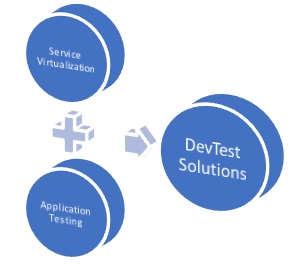While the last two chapters (Chapter 1-Intro, Chapter 2-Installation) were focused on introducing the DevTest tool, this chapter will talk about the key tool components.
CA’s DevTest solution is a testing platform that enables project teams (developers / testers) to not only plan and execute application /functional testing but also perform service virtualization. In fact, this DevTest solution integrates with Selenium and helps teams to automate testing of web based applications.
A quick note – Service Virtualization is simulating a service virtually instead of actually being dependent on a production service (obviously the latter is expensive and most of the times it isn’t feasible to get hold of the service or get access).
CA DevTest Tool Components:
- Registry
This acts as a central location for the registration of all the workstations and the servers in use. It provides a lookup for all the run-time component of the solution. A fully qualified registry name would look something like– tcp://hostname-or-IP-address:2010/<registry-name>.
2. Coordinator
It coordinates the tests that run on one or more simulators and acts as load balancer for test instances during runtime. These servers also receive test run information as documents.
3. Simulator
This is the main component. Virtual users or test instances are created and run on the simulator servers. Simulator servers run the tests under the supervision of the coordinator server. A fully qualified name for a simulator server is tcp://hostname-or-IP-address:2014/simulator-name.
4. Enterprise Dashboard
This maintains a license for all the server components and workstations.
5. Virtual Service Environment
This component has all the virtual services that have been deployed to that particular environment.
6. Portal
It is a web based application that provides easy UI access to multiple workflows for the tool. The execution history of the test cases and server health, next test case run time, adhoc test execution and many more is displayed here. Options to deactivate, delete , redeploy and overall manage test cases is available. Information about their scheduled times is displayed here.
7. Workstation:
Workstation is a desktop client component that is , primarily , used for development and debugging of application test cases. This component allows to build test cases as per application requirements and perform various kind of health check for the same. In upcoming chapters, you will get to know the different options available to perform these checks.

Links to previous chapters-





